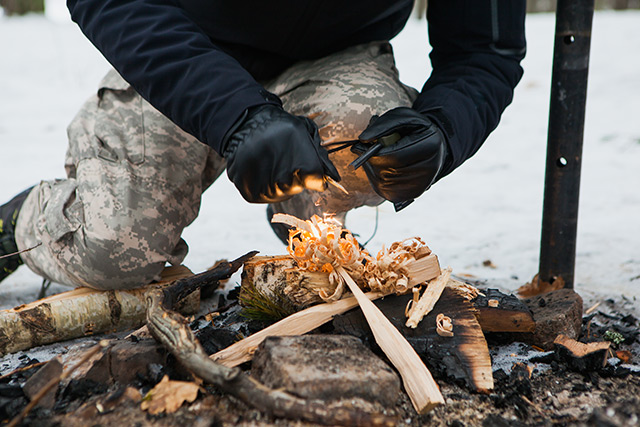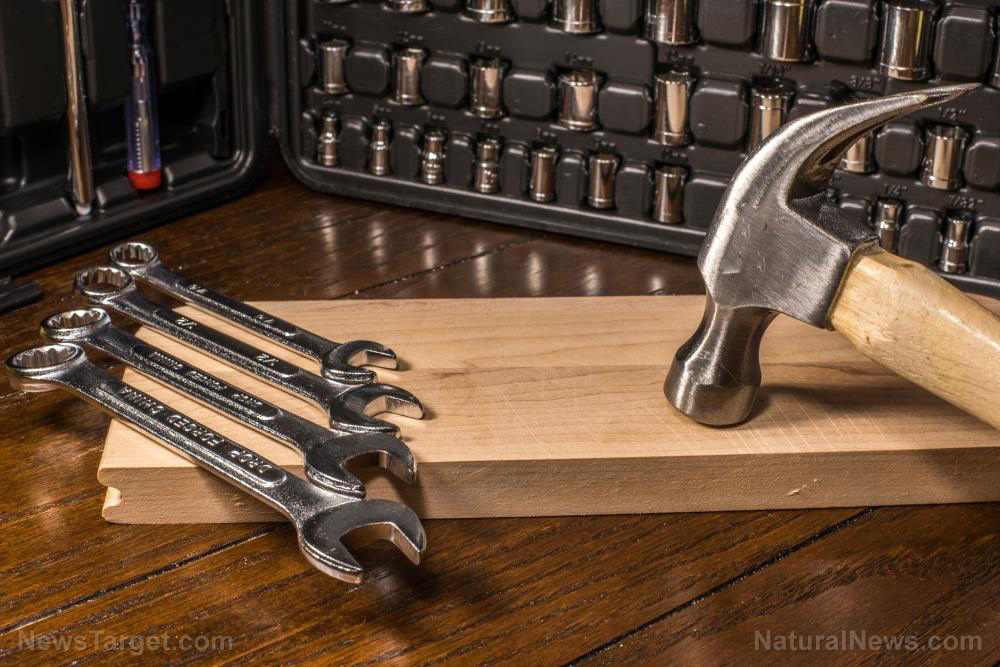Make your own flint tools and weapons like ancient peoples once did
04/30/2018 / By Jessica Dolores

Tools are requirements for survival. This our ancestors knew all too well: They had to fend off wild beasts, fight invading tribes, and protect themselves from other forces that threatened it. They had to survive in the wild and conquer the forces of man and nature.
That’s why they made flint tools. You can try being in our ancestors’ shoes by learning flint knapping of rocks, the most ancient way of making tools. (h/t to SurvivorSullivan.com.)
First, you must choose a suitable flint. Do not use boulders that have no bulges or nodules because they’re heavy and difficult to work on. Next, you should get a hard hammerstone to knock off a nodule from the outside. This should produce a window on the flint inside. If the color is regular, you won’t notice cracks or splits which could mean water damage.
The best hammerstones are made from medium to coarse-grained rock like granite or quartzite. They should be rounded and small enough to fit snugly into your hand. Try to find one with a round end and slightly flattened end where your forefinger can go. Near-spherical stones are not easy to hold, so choose egg-shaped ones.
You’ll also need billets and soft hammers. The most common choices are wood and antler.
Pressure flakers and nibblers are small tools with pointed or slotted ends, for fine shaping of arrowheads, spearpoint, and blade edges. They are usually made of antler tine. A pressure flaker’s pointed end is for pushing small flakes off the edges of a larger piece, and gradually whittling down the shape. A nibbler has a mouth-like slot at the end.
Start by either reducing the material around a core, leaving the core shaped like the desired tool, or using smaller flakes taken from larger cores as tools themselves. For the second option, you may remove the smaller flakes to refine the tool’s shape.
You can make a core tool by taking a large flake of flint (a piece broken off a boulder) and shaping it accordingly. Start with a large flake, and a hammerstone. Position the work against your thigh or knee, opposite your hammerstone. The flattish side of the work should be around 30° below horizontal, on the outer side of your thigh.
Bring the hammerstone down, near the edge of your work, at an angle to the stone. You should hit the point close to the edge. But it should be far enough from the edge, to keep you from hitting a very thin piece of flint, which will break into pieces.
This first stroke should knock off an outer flake from under your work. If your work has a layer of cortex (the chalky outer covering of flint), this stroke should also knock off portions of the said layer.
Work around the edge, breaking down the largest one by one. Notice how the first flake will have two small points at the edge where the flake was taken off. Work around the edge, reducing the largest lumps one by one. You’ll see that the first flake has left two small points at the edge of where the flake came off.
Choose which end of the flint will be the butt and which will be the tip. Take flakes off by striking from the front. Turn the work over and strike from this side.
Take more flakes off the tip to make a handaxe. This will make it thin and narrower compared with the butt. You should also take less flakes from the butt and use abrasion along with direct hits at right angles to the flint to round out the edges. Don’t forget to polish the edges of the axehead after flaking.
You’re not expected to make the perfect flint tool. But having basic knowledge about making these tools can prepare you for emergencies that call for survival skills. You’ll never know when these tools, along with a survival kit, can save your life.
You can become the prepper you’ve always wanted to be by reading the survival articles found at Preparedness.news.
Sources include:
Tagged Under: axehead, Flint, flint knapping, flint tools, Gear, making tools, prepping, skills, survival, survival tools, wilderness




















